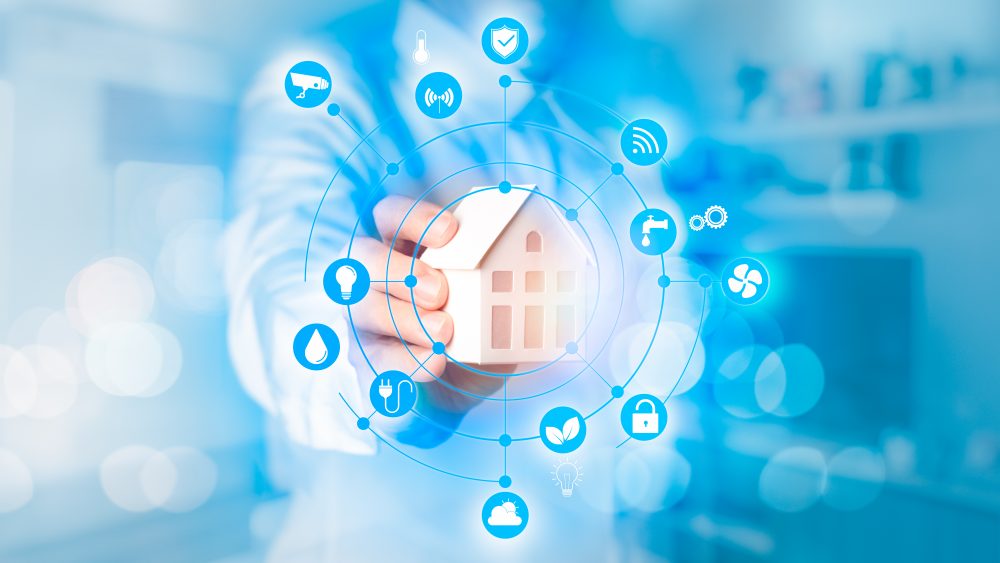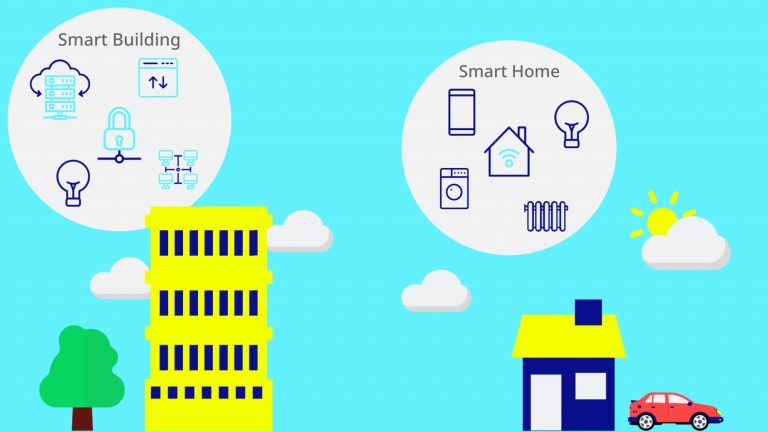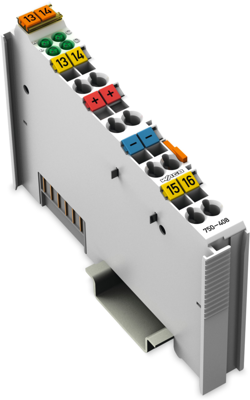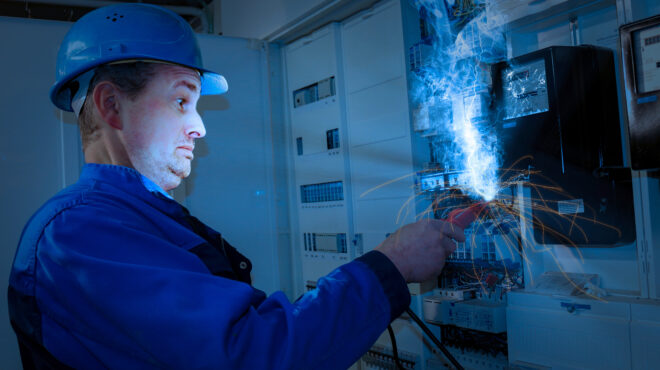
Smart Buildings: The Building of the Future
A tight networking of people, systems and the environment is the trend: Whether in smart homes, smart buildings or smart cities - intelligent technologies are playing an increasingly important role in all areas of life.
Table of contents
- Smart Buildings Vs. Smart Homes: A Definition
- How does a smart building work?
- Smart Cities - Cities that think
- Energy efficiency thanks to smart homes
- The role of the smart meter
- Smart grids – The intelligent energy supply
- Radio or cable? Networking in the Smart Home
- Technical Components for Smart Buildings at Bürklin Elektronik
Smart Buildings Vs. Smart Homes: A Definition
Intelligent lighting, automatically controlled blinds, heating cost savings all thanks to weekly and annual programs and smartphone apps – digital equipment creates a new quality of life and is part of modern living. Smart Home is the magic word here.
The term “smart home” refers to a home and includes special, replaceable components. The term “smart building,” on the other hand, refers to the digitization of an entire building.
More and more processes in everyday life – whether at work or in one’s own four walls – are being automated and adapted to individual needs. Close networking of people, systems and the environment is the trend. Whether in smart homes, smart buildings or smart cities, for example – intelligent technologies are playing an increasingly important role in all areas of life.

How does a smart building work?
When we talk about smart buildings, the focus is primarily on automation, security, and efficiency. Characteristic of these smart buildings are the interfaces to other buildings, municipal facilities, or utilities. They form the basis for the so-called “smart cities”.
In order to automate processes in the home, basic factors are needed that enable convenient control:
- Smart gadgets: The devices are compatible with each other or have the same wireless standard. They must “speak the same language.”
- Connectivity: Ideally, a unified control system is used that networks all devices that are to work together, so to speak. Depending on the manufacturer, these control centers are also referred to as hubs, bridges, or gateways.
- Automation: The devices communicate via an interaction of sensors and actuators. If a device registers a change in the room, this is forwarded as a signal to the control center. From there, an actuator triggers a reaction, which the device then executes. When such reactions are linked, they are referred to as a scene or routine. An example would be the simultaneous switching on of the ambient light and the television.
A well-known example of a smart building is the cube berlin. All processes in the office building are controlled by artificial intelligence and it is one of the first smart commercial buildings.
Smart Cities – Cities that think
They know when their citizens will be on the road and where and prevent congestion by directing traffic flows and providing information. They anticipate when and how much electricity will be needed and turn on the air conditioners or heaters in good time: Smart Cities. More and more cities are relying on smart technologies to be fit for the future.
In the process, intelligent control, safety, and energy management systems make optimum use of resources and save on expenditure. Sustainability-based smart cities such as Fujisawa SST are a good example of how people’s everyday lives can be fundamentally changed.
Energy efficiency thanks to smart homes
Smart living has become the new normal over the last few years. The aim is to automate as many processes as possible and thus simplify everyday life. It also aims to optimize energy consumption in the home.
Data can be accessed permanently, and processes are controlled remotely. Detecting power guzzlers or malfunctions is also easier.
In terms of energy efficiency, heating, and ventilation, for example, are linked: When the windows are open, the heating output is automatically regulated downward. Further savings are achieved by switching off unused sources of consumption. When you leave the house, for example, the lights switch off and the appliances go into standby mode.
Smart devices are now available in almost every area of the home – whether it is a robotic vacuum cleaner, smart TV, smart door locks, intelligent thermostats, or lights. Everything is possible and above all – networkable. Blinds, vents, or warning alarms of any kind also belong to the well-known smart home device categories.
The role of the smart meter
The heart of the smart home is in the meter cabinet. Central units in the home enable convenient control of a wide variety of devices and save energy and money to boot. The regulation of data traffic in combination with networking is the basis for a smart home.
Digital electricity meters are also known as smart meters and are increasingly replacing mechanical meters. The advantages: Smart meters enable reliable operation of the power supply and are easy to use. For example, there is no need to read the meter every year, and faults are detected more quickly. In addition, digital electricity meters provide information about unnecessary power guzzlers and better tariffs, which can save money in the end. According to the Energy Industry Act (EnWG), smart meters have had to be implemented in new buildings since 2010.
Smart grids – The intelligent energy supply
Smart meters are connected to the intelligent power grid – the smart grid. Here, all grids within an energy system are interconnected. This is done via a communication network that ensures an efficient cost balance between electricity consumers, generators, and storage facilities as well as an economical energy supply.
The three important cornerstones of smart grids are:
- Optimal integration of decentralized power generation into current distribution grid operations
- Efficient use of infrastructure and grid optimization through better matching between volatile generation and flexible consumption
- Cost optimization through the combination of renewable energies and grid automation as well as through reduction of CO2 emissions
Radio or cable? Networking in the Smart Home
The networking of systems in the smart home can be done in two ways: via radio-based or wired networking. Both variants have their advantages and disadvantages, which should be considered before purchasing.
While many manufacturers develop smart home systems that can be used for multiple brands, others rely on a proprietary wireless protocol. These closed systems limit the range of devices somewhat but offer reliable interaction. Wired systems, on the other hand, are a bit more expensive but can be customized.
How does radio-based interconnection work?
Radio-based systems are most often used in rental properties, as they do not require a lot of effort and include different radio protocols. The most popular radio systems are Bluetooth, WLAN, ZigBee, and Z-Wave, which definitely have advantages for beginners.
Advantages of radio-based systems:
- Flexible
- Wide range of compatible devices
- Low costs
Contrary to radio standards developed specifically for smart home applications, WLAN and Bluetooth also have their pitfalls. Although they consume less energy, operation is only possible locally.
Disadvantages of radio-based-systems:
- Connection susceptible to interference
- Low range regarding control
How does cable-based networking work?
The counterpart to the radio connection is the wireless networking, better known as bus system. One of the best-known cable-based systems is the KNX bus system. Due to the high initial costs, it is mostly used only in new buildings, but it allows completely individual wiring. This allows the system to be perfectly customized. Wireless KNX options, whose networking is done via radio or infrared, can also be implemented later.
Advantages of cable-based systems:
- Low energy consumption and low operating costs
- Flexible expansion
- Remote control
- Integration of different systems
Disadvantages of cable-based systems:
- High acquisition costs
- Individual cabling only for new buildings
- Planning-intensive
- Reliability of gadgets can vary
Technical Components for Smart Buildings at Bürklin Elektronik
Intelligently networked buildings are considered the key to the energy transition. Bürklin Elektronik has a wide range of components and devices for facility and automation for the digitalization of buildings: from signal transmitters to controllers and interfaces to sensors, lighting systems and much more.
In the online store you can quickly and easily find the right component for your building automation. If you have any questions about the automation range, please contact the experts at Bürklin Elektronik at any time.




